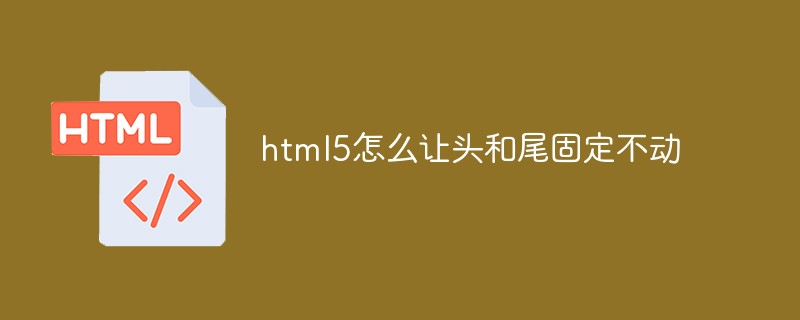 Web Front-end
Web Front-end H5 Tutorial
H5 Tutorial Use ActionScript-like syntax to write html5 - the first article, display a picture
Use ActionScript-like syntax to write html5 - the first article, display a pictureI recently started to learn html5. Because I have always studied as, I still think as is more pleasing to the eye, but I have to learn html5, so I figured out that I can write html5 using the syntax of as, which is suitable for making games. It's easier. Let's start the first article
The first article shows a picture
1, code comparison
as code:
public var loader:Loader;
public function loadimg():void{
loader = new Loader();
loader.contentLoaderInfo.addEventListener(Event.COMPLETE,complete);
loader.load(new URLRequest("10594855.png"));
}
public function complete(event:Event):void{
var image:Bitmap = Bitmap(loader.content);
var bitmap:BitmapData = image.bitmapData;
addChild(image);
}js code:
window.onload = function(){
var canvas = document.getElementById("myCanvas");
var context = canvas.getContext("2d");
image = new Image();
image.onload = function(){
context.drawImage(image, 0, 0, 240, 240);
};
image.src = "10594855.png";
};Two, write the code after js class library (tentatively named legend library)
var loader;
function main(){
loader = new LLoader();
loader.addEventListener(LEvent.COMPLETE,loadBitmapdata);
loader.load("10594855.png","bitmapData");
}
function loadBitmapdata(event){
var bitmapdata = new LBitmapData(loader.content);
var bitmap = new LBitmap(bitmapdata);
addChild(bitmap);
}Three, implement
1, build a static class, convenient Save and access public method attributes, such as canvas, etc.
var LGlobal = function (){}
LGlobal.type = "LGlobal";We always use canvas, so we need to save the canvas and add properties and methods to the LGlobal class
LGlobal.canvas = null;
LGlobal.width = 0;
LGlobal.height = 0;
LGlobal.setCanvas = function (id,width,height){
var canvasObj = document.getElementById(id);
if(width)canvasObj.width = width;
if(height)canvasObj.height = height;
LGlobal.width = canvasObj.width;
LGlobal.height = canvasObj.height;
LGlobal.canvas = canvasObj.getContext("2d");
}Interface In order to be able to display dynamically, choose to constantly refresh the canvas
Add a continuous refresh method to the LGlobal class
LGlobal.onShow = function (){
if(LGlobal.canvas == null)return;
LGlobal.canvas.clearRect(0,0,LGlobal.width,LGlobal.height);
}Then, I envision saving all real objects in an array , and then display them in order
And all objects that can be displayed have a show method to draw themselves on the canvas
The LGlobal class was last modified to
var LGlobal = function (){}
LGlobal.type = "LGlobal";
LGlobal.canvas = null;
LGlobal.width = 0;
LGlobal.height = 0;
LGlobal.childList = new Array();
LGlobal.setCanvas = function (id,width,height){
var canvasObj = document.getElementById(id);
if(width)canvasObj.width = width;
if(height)canvasObj.height = height;
LGlobal.width = canvasObj.width;
LGlobal.height = canvasObj.height;
LGlobal.canvas = canvasObj.getContext("2d");
}
LGlobal.onShow = function (){
if(LGlobal.canvas == null)return;
LGlobal.canvas.clearRect(0,0,LGlobal.width,LGlobal.height);
LGlobal.show(LGlobal.childList);
}
LGlobal.show = function(showlist){
var key;
for(key in showlist){
if(showlist[key].show){
showlist[key].show();
}
}
}2, in as, the picture The two classes BitmapData and Bitmap are used for display. In order to realize the functions of these two classes, we create two classes LBitmapData and LBitmap respectively
Let's first look at the LBitmapData class. The LBitmapData class is used to store image data, etc. We store Image() in the LBitmapData class
function LBitmapData(image,x,y,width,height){
var self = this;
self.type = "LBitmapData";
self.oncomplete = null;
if(image){
self.image = image;
self.x = (x==null?0:x);
self.y = (y==null?0:y);
self.width = (width==null?self.image.width:width);
self.height = (height==null?self.image.height:height);
}else{
self.x = 0;
self.y = 0;
self.width = 0;
self.height = 0;
self.image = new Image();
}
}Looking at the LBitmap class, the LBitmap class is used to display the Image() stored in the LBitmapData class
function LBitmap(bitmapdata){
var self = this;
self.type = "LBitmap";
self.x = 0;
self.y = 0;
self.width = 0;
self.height = 0;
self.scaleX=1;
self.scaleY=1;
self.visible=true;
self.bitmapData = bitmapdata;
if(self.bitmapData){
self.width = self.bitmapData.width;
self.height = self.bitmapData.height;
}
}About Image() For display, we use the show method mentioned at the beginning, which is implemented as follows
LBitmap.prototype = {
show:function (){
var self = this;
if(!self.visible)return;
LGlobal.canvas.drawImage(self.bitmapData.image,
self.bitmapData.x,self.bitmapData.y,self.bitmapData.width,self.bitmapData.height,
self.x,self.y,self.width*self.scaleX,self.height*self.scaleY);
}
}3. Finally, there is still a Loader missing. We create our own LLoader class
function LLoader(){
var self = this;
self.loadtype = "";
self.content = null;
self.oncomplete = null;
self.event = {};
}
LLoader.prototype = {
addEventListener:function(type,listener){
var self = this;
if(type == LEvent.COMPLETE){
self.oncomplete = listener;
}
},
load:function (src,loadtype){
var self = this;
self.loadtype = loadtype;
if(self.loadtype == "bitmapData"){
self.content = new Image();
self.content.onload = function(){
if(self.oncomplete){
self.event.currentTarget = self.content;
self.oncomplete(self.event);
}
}
self.content.src = src;
}
}
}4 , the LEvent class is used in 3. The LEvent class is an event class used to load events, clicks, etc. This will be gradually strengthened in the future
var LEvent = function (){};
LEvent.COMPLETE = "complete";
LEvent.ENTER_FRAME = "enter_frame";
LEvent.currentTarget = null;
LEvent.addEventListener = function (node, type, fun){
if(node.addEventListener){
node.addEventListener(type, fun, false);
}else if(node.attachEvent){
node['e' + type + fun] = fun;
node[type + fun] = function(){node['e' + type + fun]();}
node.attachEvent('on' + type, node[type + fun]);
}
}5. Before displaying, we need to have an The addChild method is as follows
function addChild(DisplayObject){
LGlobal.childList.push(DisplayObject);
}6. Finally, after the entire page is read, the image can be displayed
function init(speed,canvasname,width,height,func){
LEvent.addEventListener(window,"load",function(){
setInterval(function(){LGlobal.onShow();}, speed);
LGlobal.setCanvas(canvasname,width,height);
func();
});
}
init(40,"back",300,300,main);
var loader;
function main(){
loader = new LLoader();
loader.addEventListener(LEvent.COMPLETE,loadBitmapdata);
loader.load("10594855.png","bitmapData");
}
function loadBitmapdata(event){
var bitmapdata = new LBitmapData(loader.content);
var bitmap = new LBitmap(bitmapdata);
addChild(bitmap);
}The above is the syntax of imitating ActionScript Let's write html5 - the first article, display the content of an image. For more related content, please pay attention to the PHP Chinese website (www.php.cn)!
 html5的div一行可以放两个吗Apr 25, 2022 pm 05:32 PM
html5的div一行可以放两个吗Apr 25, 2022 pm 05:32 PMhtml5的div元素默认一行不可以放两个。div是一个块级元素,一个元素会独占一行,两个div默认无法在同一行显示;但可以通过给div元素添加“display:inline;”样式,将其转为行内元素,就可以实现多个div在同一行显示了。
 html5中列表和表格的区别是什么Apr 28, 2022 pm 01:58 PM
html5中列表和表格的区别是什么Apr 28, 2022 pm 01:58 PMhtml5中列表和表格的区别:1、表格主要是用于显示数据的,而列表主要是用于给数据进行布局;2、表格是使用table标签配合tr、td、th等标签进行定义的,列表是利用li标签配合ol、ul等标签进行定义的。
 html5怎么让头和尾固定不动Apr 25, 2022 pm 02:30 PM
html5怎么让头和尾固定不动Apr 25, 2022 pm 02:30 PM固定方法:1、使用header标签定义文档头部内容,并添加“position:fixed;top:0;”样式让其固定不动;2、使用footer标签定义尾部内容,并添加“position: fixed;bottom: 0;”样式让其固定不动。
 HTML5中画布标签是什么May 18, 2022 pm 04:55 PM
HTML5中画布标签是什么May 18, 2022 pm 04:55 PMHTML5中画布标签是“<canvas>”。canvas标签用于图形的绘制,它只是一个矩形的图形容器,绘制图形必须通过脚本(通常是JavaScript)来完成;开发者可利用多种js方法来在canvas中绘制路径、盒、圆、字符以及添加图像等。
 html5中不支持的标签有哪些Mar 17, 2022 pm 05:43 PM
html5中不支持的标签有哪些Mar 17, 2022 pm 05:43 PMhtml5中不支持的标签有:1、acronym,用于定义首字母缩写,可用abbr替代;2、basefont,可利用css样式替代;3、applet,可用object替代;4、dir,定义目录列表,可用ul替代;5、big,定义大号文本等等。
 html5废弃了哪个列表标签Jun 01, 2022 pm 06:32 PM
html5废弃了哪个列表标签Jun 01, 2022 pm 06:32 PMhtml5废弃了dir列表标签。dir标签被用来定义目录列表,一般和li标签配合使用,在dir标签对中通过li标签来设置列表项,语法“<dir><li>列表项值</li>...</dir>”。HTML5已经不支持dir,可使用ul标签取代。
 Html5怎么取消td边框May 18, 2022 pm 06:57 PM
Html5怎么取消td边框May 18, 2022 pm 06:57 PM3种取消方法:1、给td元素添加“border:none”无边框样式即可,语法“td{border:none}”。2、给td元素添加“border:0”样式,语法“td{border:0;}”,将td边框的宽度设置为0即可。3、给td元素添加“border:transparent”样式,语法“td{border:transparent;}”,将td边框的颜色设置为透明即可。
 html5为什么只需要写doctypeJun 07, 2022 pm 05:15 PM
html5为什么只需要写doctypeJun 07, 2022 pm 05:15 PM因为html5不基于SGML(标准通用置标语言),不需要对DTD进行引用,但是需要doctype来规范浏览器的行为,也即按照正常的方式来运行,因此html5只需要写doctype即可。“!DOCTYPE”是一种标准通用标记语言的文档类型声明,用于告诉浏览器编写页面所用的标记的版本。


Hot AI Tools

Undresser.AI Undress
AI-powered app for creating realistic nude photos

AI Clothes Remover
Online AI tool for removing clothes from photos.

Undress AI Tool
Undress images for free

Clothoff.io
AI clothes remover

AI Hentai Generator
Generate AI Hentai for free.

Hot Article

Hot Tools

SublimeText3 English version
Recommended: Win version, supports code prompts!

DVWA
Damn Vulnerable Web App (DVWA) is a PHP/MySQL web application that is very vulnerable. Its main goals are to be an aid for security professionals to test their skills and tools in a legal environment, to help web developers better understand the process of securing web applications, and to help teachers/students teach/learn in a classroom environment Web application security. The goal of DVWA is to practice some of the most common web vulnerabilities through a simple and straightforward interface, with varying degrees of difficulty. Please note that this software

mPDF
mPDF is a PHP library that can generate PDF files from UTF-8 encoded HTML. The original author, Ian Back, wrote mPDF to output PDF files "on the fly" from his website and handle different languages. It is slower than original scripts like HTML2FPDF and produces larger files when using Unicode fonts, but supports CSS styles etc. and has a lot of enhancements. Supports almost all languages, including RTL (Arabic and Hebrew) and CJK (Chinese, Japanese and Korean). Supports nested block-level elements (such as P, DIV),

Notepad++7.3.1
Easy-to-use and free code editor

PhpStorm Mac version
The latest (2018.2.1) professional PHP integrated development tool





